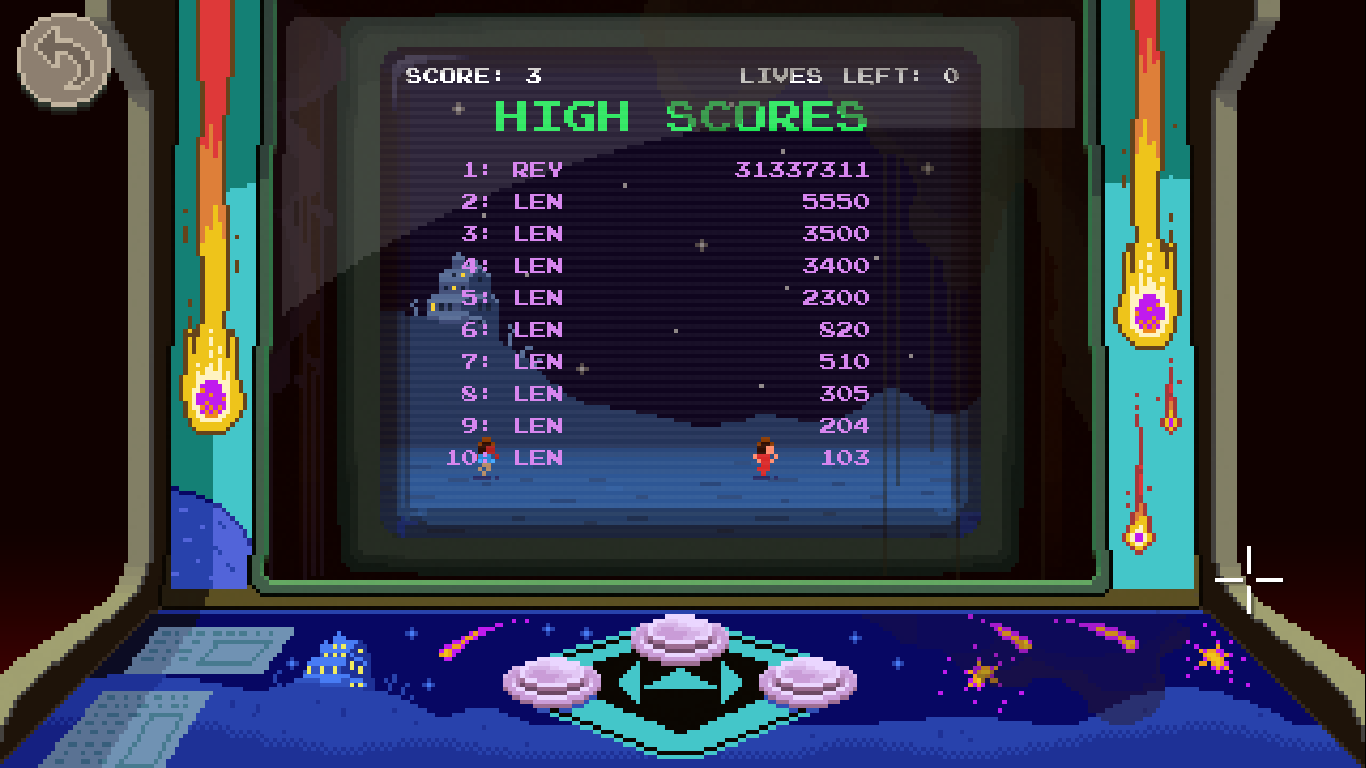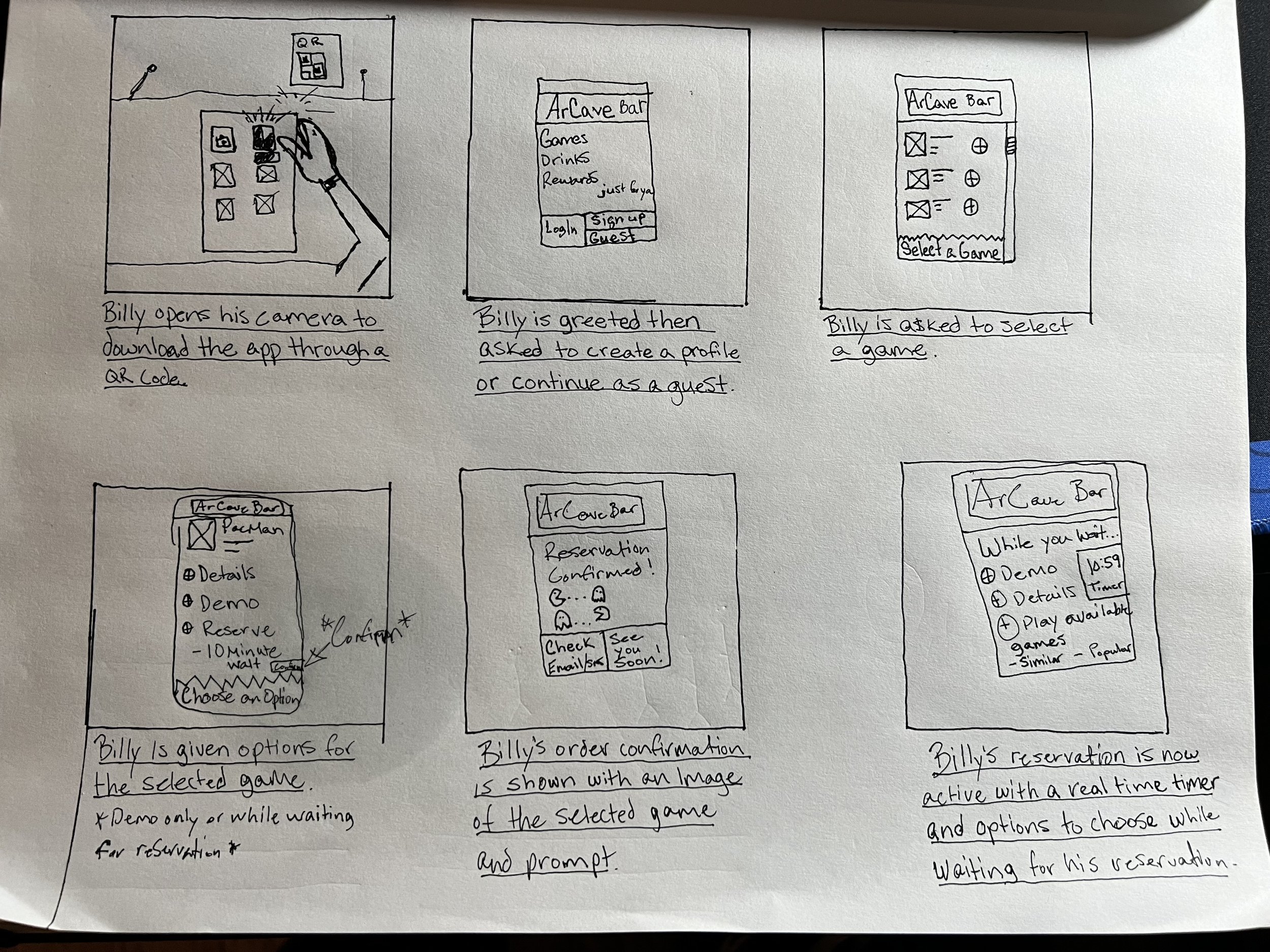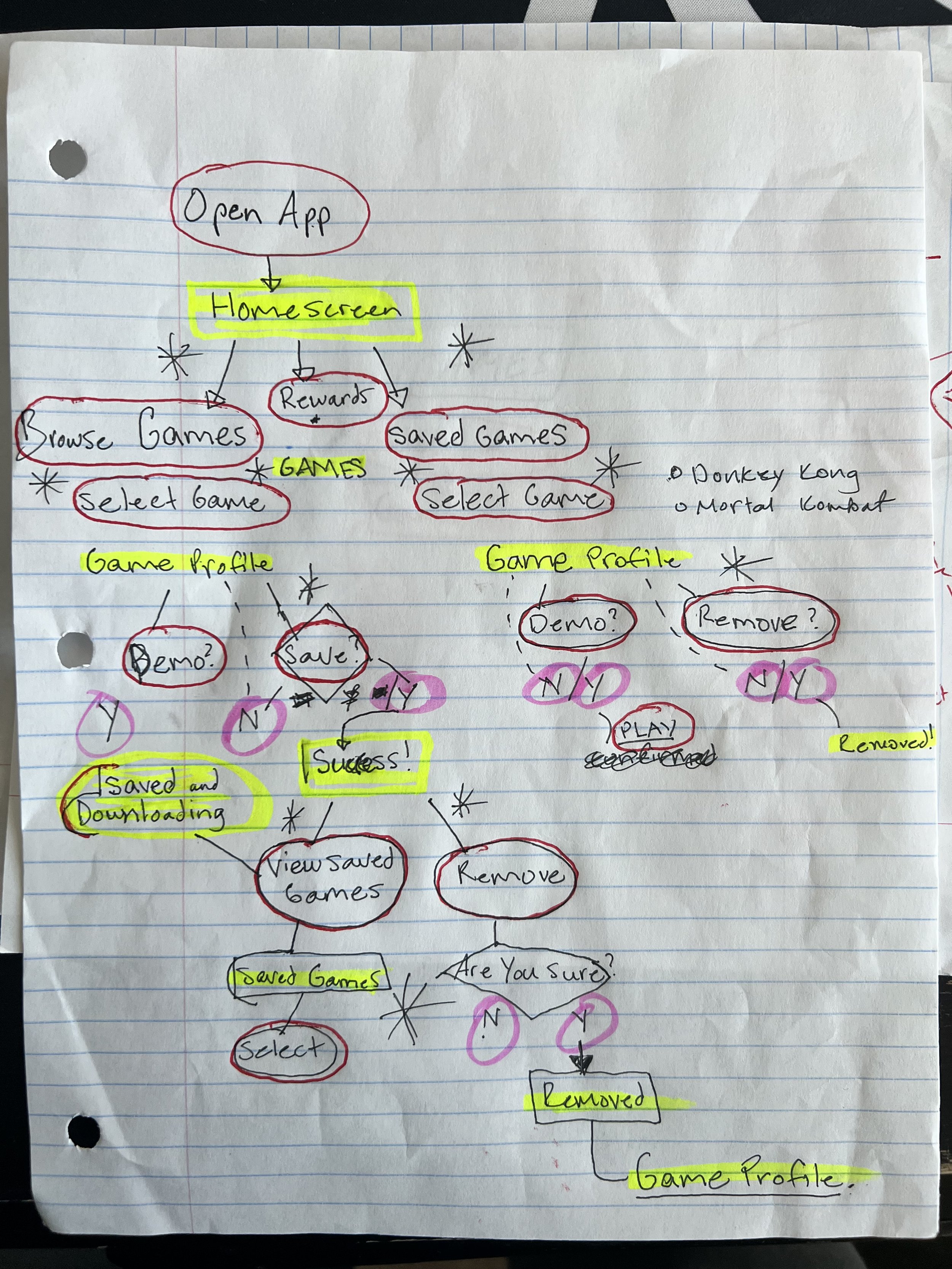
AFTERHOURS BAR
ARCADE APP
MARCH 2023 - AUGUST 2023

Project Overview
BACKGROUND
After completing my bachelor's in psychology, I traveled across the US, visiting various gaming arcades, each with different themes, games, and layouts. Every arcade had unique features such as a bar, food, prizes/rewards, and tournament competitions.
During each visit, I decided to research how players felt about each location by administering questionnaires and conducting interviews. After observing and listening to users/players, I designed a board of common themes and personas to better group players with the most similarities and preferences.
ROLE
UX Designer & Researcher in collaboration with two UX Designers
TIMEFRAME
14 Weeks
PROCESS
Primary & Secondary Research, Usability Studies, Competitive Analysis
TOOLS
Figma, Adobe XD, Qualitrics, Survey-Monkey

Problem
Let’s Discover
Arcade games are known for fun, but most are outdated and don’t take advantage of smartphone accessibility.
Examples: Long wait times, unpredictable game selection, and noninclusive environment.
With the help of online surveys and in-person interviews, I was able to create two user groups with distinct motivation incentives; one group’s motivation for playing was reward, and the other group was motivated by challenges. A primary user group identified during the research was adults who feel more engaged when playing with others, whether for fun or competitive reasons.
This user group confirmed the hypothesis about AfterHours’ customers and revealed other pain points such as waiting in line or feeling confused due to the lack of organization. The research also showed a stronger correlation between the level of engagement and playing time when an app was mentioned.
Goal
“How might we modernize arcade accessibility for gamers and nongamers who feel incentivized by rewards and competition?”
By designing an app based on further interviews, detailed observations, and open-ended discussions with users, we can give users the power to take advantage of smartphone accessibility to reserve games, view rewards, the library, and upcoming tournaments without having to wait in line or ask around.
Examples: Game reservations, Reward viewing, Meet and engaging with others

User Research Recap
User Testing
To gather players' thoughts on arcades, I conducted tests at various locations, distributed questionnaires, and conducted interviews. I used the feedback to create a chart of common themes and personas.
Target Audience
Currently, the ideal market of interest will be locals and tourists in the New Orleans area.
Note: Our long-term goal is to branch out and become a medium for other arcades and users.
See more in the Reflections Section at the bottom.
Methodology: Mixed Method
30 adults between ages 21-45 were interviewed (Qualitative) and given a survey (Quantitative) regarding their experiences, enjoyment, and frustrations with arcades. Users expressed three major pain points with the existing experience, shown below.
What do you value most in Arcades?
Participants were asked to categorize the types of incentives from most important to least. Based on the data collected, I created two groupings based on types of desirable incentives:
Competition, playing to win
Prizes, playing to enjoy
Meeting people
Incentive Types (3)
Personas
Valentina is a graduate student who wants way to socialize and win rewards because she’s shy and deals with language barriers.
Billy is a busy working adult in a relationship who needs a way to access competitive gaming because he doesn’t feel challenged.
Pain Points
Wait Time
Waiting in line can create a mundane experience, especially for popular games.
Gaming Preview/Guide
Knowing how to play an arcade may come naturally for some, but not all. Users feel that there isn’t an explanation. Some games may seem popular but everyone will not be guaranteed to like them. This creates a bad experience for those waiting in line for a long period of constantly checking if the game is available.
Highscore
Whether to win rewards or beat opponents, users want to have the ability to view their scores and compare it to others.

Melanie R. Arcade Participant
“I wouldn’t call myself a hardcore gamer, but I love the rush of excitement when competing.”
Jordan L. Arcade Participant
“Random arcade nights with friends and meeting new people is so fun!”
Wireframes
Click images for a closer look
Digital Wireframe 2.0
Both user groups emphasized the importance of freedom of choice and preview, which led to the idea of allowing users to demo the game, read details, or cancel the reservation.
Digital Wireframe 1.0
Based on user research findings, most users responded positively to reserving games but felt low confidence without clear instructions and guidance. Designs were created to minimize confusion and enhance familiarity.

Prototypes
Mockups
Initially, users had the option to demo, view details, reserve and cancel. After the usability studies, the game’s genre was added along with photos and videos to allow users to decide if they want to play a game before wasting time.
Mockups
The second round of usability studies showed that users should be able to book in advance which is simpler with a calendar. In addition, the confirmation screen informs users of the transition which creates a smooth navigational transition without surprises.

Reflection
How did your users respond?
The After Hours Arcade App helps connect the bridge between nostalgic entertainment and advanced technology to benefit users.
Overall, we received positive feedback, and users were motivated by the ability to have their scores listed on the leaderboard and save their favorite games in their library.
“Initially, I felt that an arcade app was strange, but features such as reserving games give everyone a chance to be involved. Having smart apps for arcades may be the only chance for arcades to stay in style.”
What's next?
Prepare a research study of another set of usability studies to analyze the quantitative data between the prototype before insights and the prototype after insights.
Design a link for app users to leave reviews and feedback. After analyzing the results, create new themes and insights for further improvement.
What did you learn?
I learned how to separate myself from the users while designing, focus on individual-specific problems based on data, and walk through design iterations and feedback. I’ve also noted my tendency to add many features instead of highlighting the main features with the highest impact to create a minimally viable product.
Throughout the After-Hours Arcade's research, testing, and design, I was incredibly surprised by the amount of reiteration involved. Although the project took longer than expected, I’m excited to start another project and train my weak spots in Figma and design.
Accessibility Considerations
Reassures users of accessible parking spots and walkways
Offer assistants for disabled Users



















